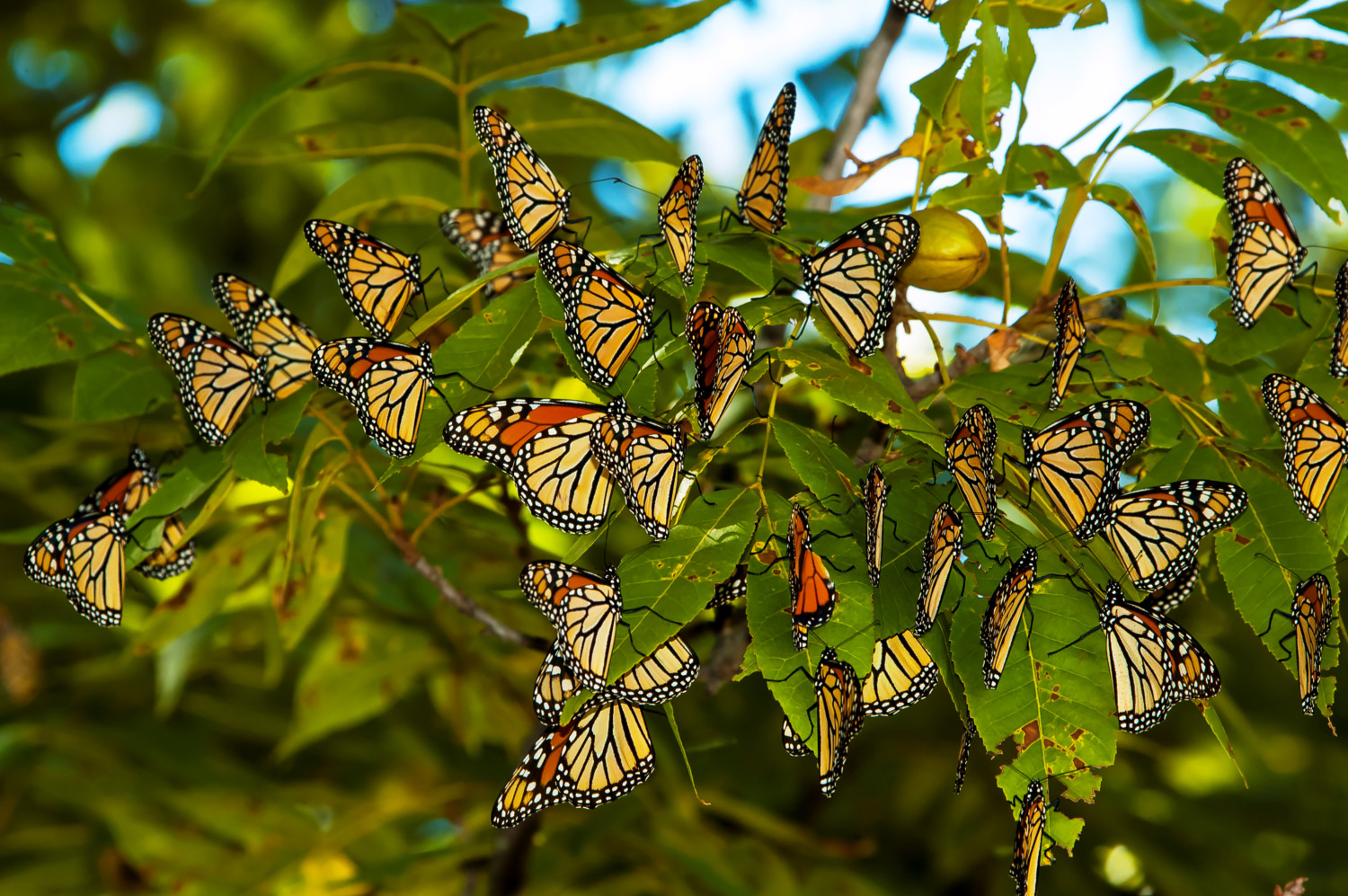After years of worry about declining populations, monarch butterflies could be making a comeback across North America.
The beautiful bugs have started their annual fall migration, and early reports from observers suggest that more of them are making the trek than in years past. The increase is attributed to good weather conditions during the migration period, as well as larger numbers of milkweed, an important food source, along their path.
Monarchs that spend spring and summer east of the Rocky Mountains head for Mexico as colder weather descends (a few go to Florida instead). The monarchs who live west of the Rocky Mountains travel to southern California. In recent decades their numbers have declined sharply; according to the Natural Resources Defense Council, habitat loss and increased pesticide use are two likely causes.

The year started out well for the eastern monarchs. The NRDC cites a count of monarchs in Mexico last winter that showed more than double the previous year’s number. It was the highest number in 10 years, to boot! Now that the southward migration is on, monarch lovers are hopeful that the population will remain strong.
Civilian butterfly boosters are spotting the colorful road warriors on their journey. Twitter user Jennifer Sommerer posted a beautiful pic of a monarch resting on fall flowers.
Every year the monarch butterflies migrate from Canada to Mexico around this time. Saw this guy hanging out on our mums today….maybe a pit stop during his migration? #monarchmigration pic.twitter.com/sy5C9cQsDx
— Profe Sommerer (@jenmsommerer071) October 14, 2019
Weatherman Chris Ramirez of San Antonio’s KSAN-TV posted a few viewer photos of monarchs that “made a pit stop” in Central Texas:
The #MonarchMigration is commencing and these gorgeous butterflies are heading south. They made a pit stop in and around #SanAngelo! Photo: Adelita Willis #Txwx #KSANwx pic.twitter.com/loW2z6yJf6
— Chris Ramirez KVEO (@ChrisRamirezWx) October 10, 2019
On Instagram, user @christisnowauthor posted a few snaps of monarchs moving through west Texas, saying they’re “everywhere.”
https://www.instagram.com/p/B3dNswdAceH/?igshid=e60bk0i576wz
One key way that folks encourage the monarchs on their annual odyssey is by planting milkweed. According to the National Wildlife Federation, the loss of milkweed plants in both urban and rural areas is a big reason why monarch populations have dipped — monarch caterpillars can only eat milkweed leaves. And the success of milkweed restoration projects may be contributing to their return.
Fortunately, word is spreading about the need to bring back milkweed. The most important thing to remember for a home garden? Plant a native milkweed species, not “tropical” milkweed, which can be harmful to monarch caterpillars.

Planting season is obviously over, and the fall monarch migration is coming to a close, but that means there’s plenty of time to plan for the northward spring migration. If you’d like to join the ranks of “citizen scientists” who report butterfly sightings, organizations like Journey North and Monarch Watch collect data from civilians on where and when monarchs are spotted.
With a little help from some human friends, these beautiful butterflies could be on the road to recovery!
This story originally appeared on Simplemost. Checkout Simplemost for additional stories.


